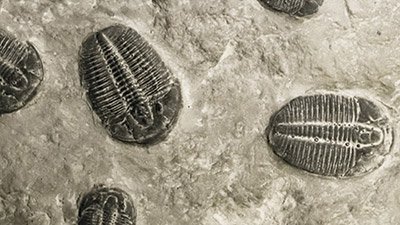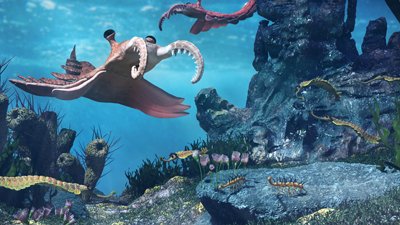Precambrian Puzzle
ScienceDaily: “Filling the Gap in the Fossil Record” Millions of years of supposed evolution without a trace in the fossil record—a puzzle of Precambrian proportions!
Tracing earth history back in time using the fossil record and evolutionary presuppositions is nothing new. Nor is the abrupt and dramatic “beginning” of the animal fossil record in the deepest Paleozoic layer, the Cambrian period. This so-called Cambrian explosion has been an ongoing mystery for evolutionists: why the transition from sparse, mostly non-animal fossils to a sudden plethora of fully developed fossil forms?
A team of researchers believe they have evidence to fill the gap.
For evolutionists, the “Neoproterozoic interval” spans the gap between the earliest supposed evolution of animals and the first (oldest) known evidence of animals, just before the Cambrian period. Now, a team of researchers believe they have evidence to fill the gap. The geologists found microscopic features in Precambrian limestone “consisting of highly structured zones with multi-generational arrays of carbonate minerals, secondary voids, and internal sediment.” That apparently matches what happens when the connective tissue of sponges decays on the sea floor.
According to the researchers, however, this is not evidence of sponges, but rather of “a structured consortium of protists in a shared collagenous scaffold.” Nonetheless, ScienceDaily declares, “These results push back the earliest geologic evidence for animals by around 200 million years.”
The creationist interpretation of this study is straightforward. The Cambrian layer is considered (generally) to be some of the first sediment laid down by the global Flood as the waters rose to cover the planet. Correspondingly, those layers are filled with marine life. Underneath that sediment is pre-Flood sediment, both the rock laid down during Creation Week and the sediment that accumulated from Creation through to the Flood (almost a 1,700-year time frame). In those sediments—partially formed by slower-acting, non-catastrophic processes—we would expect to find, for instance, microscopic traces of decaying sea life, as was found.
Thus, this find, while ostensibly giving evolutionists faith to fill in the fossil record gap, fits well into the Creation/Flood geological model.
For more information:
Remember, if you see a news story that might merit some attention, let us know about it! (Note: if the story originates from the Associated Press, Fox News, MSNBC, the New York Times, or another major national media outlet, we will most likely have already heard about it.) And thanks to all of our readers who have submitted great news tips to us.
(Please note that links will take you directly to the source. Answers in Genesis is not responsible for content on the websites to which we refer. For more information, please see our Privacy Policy.)
Recommended Resources

Answers in Genesis is an apologetics ministry, dedicated to helping Christians defend their faith and proclaim the good news of Jesus Christ.
- Customer Service 800.778.3390
- Available Monday–Friday | 9 AM–5 PM ET
- © 2026 Answers in Genesis





